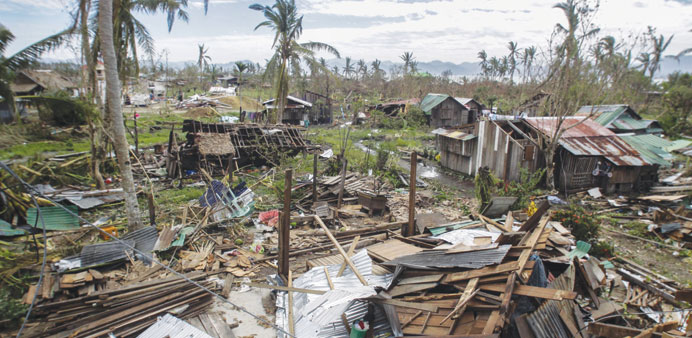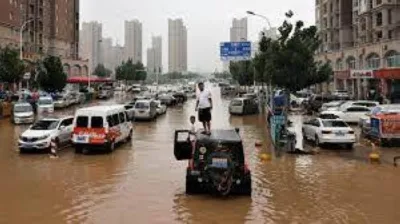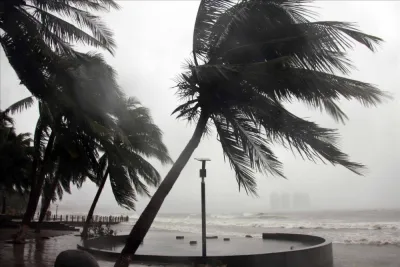Reuters/Casiguran
A typhoon that dumped heavy rains on the northern Philippines, killing 58 people as it flattened houses and destroyed crops, was petering out yesterday, weather officials said.
Typhoon Koppu weakened from a tropical depression into a low pressure area, but authorities maintained a warning to ferries and fishermen on three northern islands not to go to sea.
Raging floodwaters and landslides triggered by the typhoon in the main Philippine island of Luzon caused most of the deaths, Romina Marasigan, a spokeswoman for the national disaster agency, told reporters.
More than 100,000 people are still in temporary shelters as Koppu destroyed more than 6.57bn pesos ($141.63mn) worth of crops, infrastructure and homes.
“We were terrified and prayed as we stayed under a table for hours after strong winds blew away the roof and walls of our house,” said one survivor, Andres Subang, 72, wiping away tears as he told of how his family made it through the disaster.
“I have experienced countless typhoons in my lifetime, but this was the worst. It left nothing, we have no food and no more livelihood.”
Farm officials said flooding destroyed 5% of expected fourth-quarter production in rice-producing provinces.
The coast guard said seven people died when a boat sank in the central Philippines.
Authorities in the coastal town of Casiguran, where Koppu made landfall at the weekend as a category 4 typhoon, deployed heavy equipment to clear roads of uprooted trees, toppled electric posts and debris.
“When we went around the town, we saw the typhoon’s destructive impact, there were so many houses destroyed,” municipal official Nida Coralde told Reuters, adding that distribution of relief supplies had begun.
Strong winds reduced people’s homes to matchwood, leaving them with nothing, said one survivor, as residents began work to repair homes.
The typhoon grounded military planes and helicopters on Tuesday, forcing the government to send in food, water and other relief materials by road. Some areas were still flooded, without power and communication links.
The Philippines is hit by 20 typhoons every year, on average.

A general shot of houses destroyed by typhoon Koppu in Casiguran town, Aurora province northeast of Manila yesterday, days after the typhoon devastate


